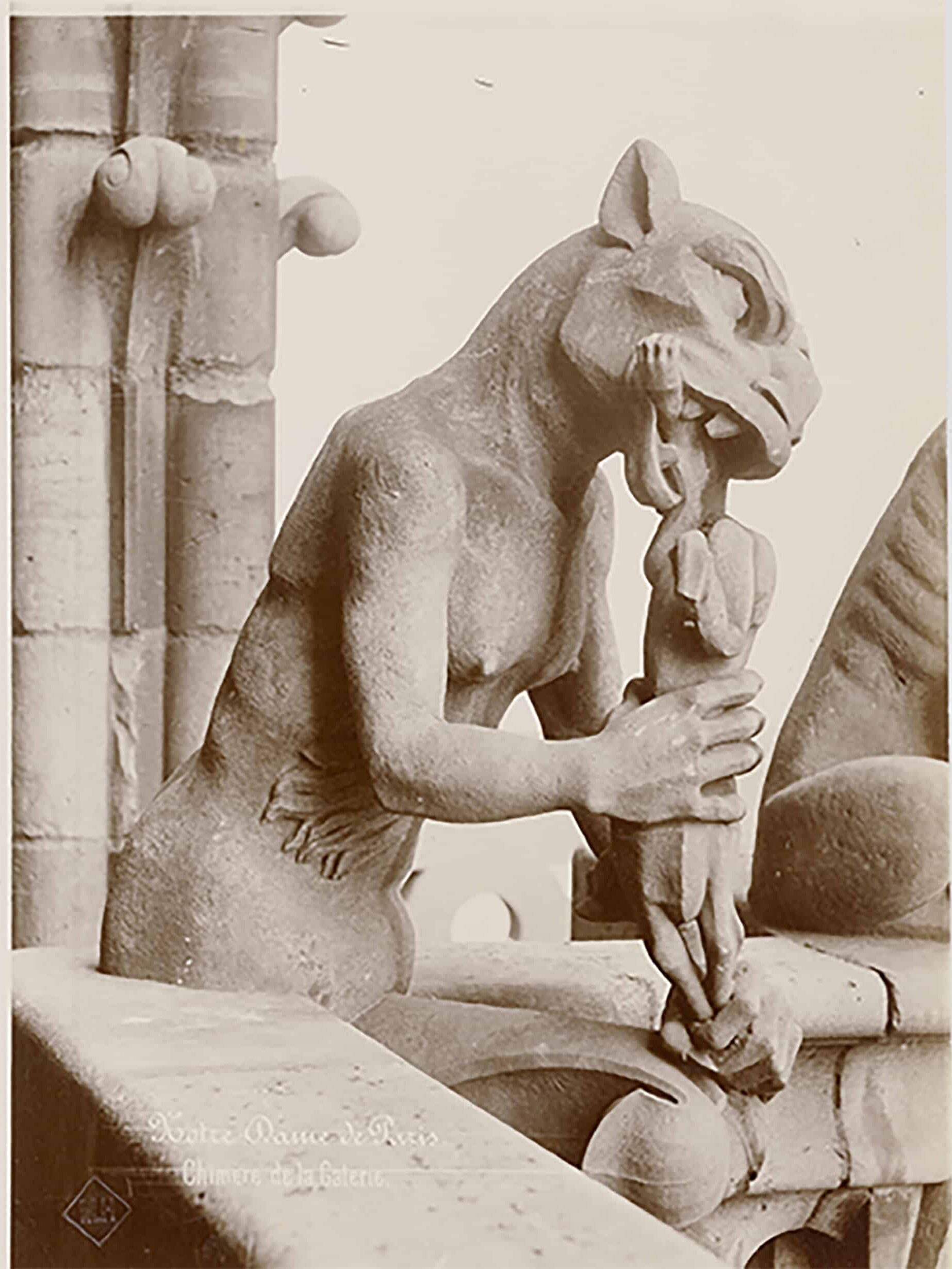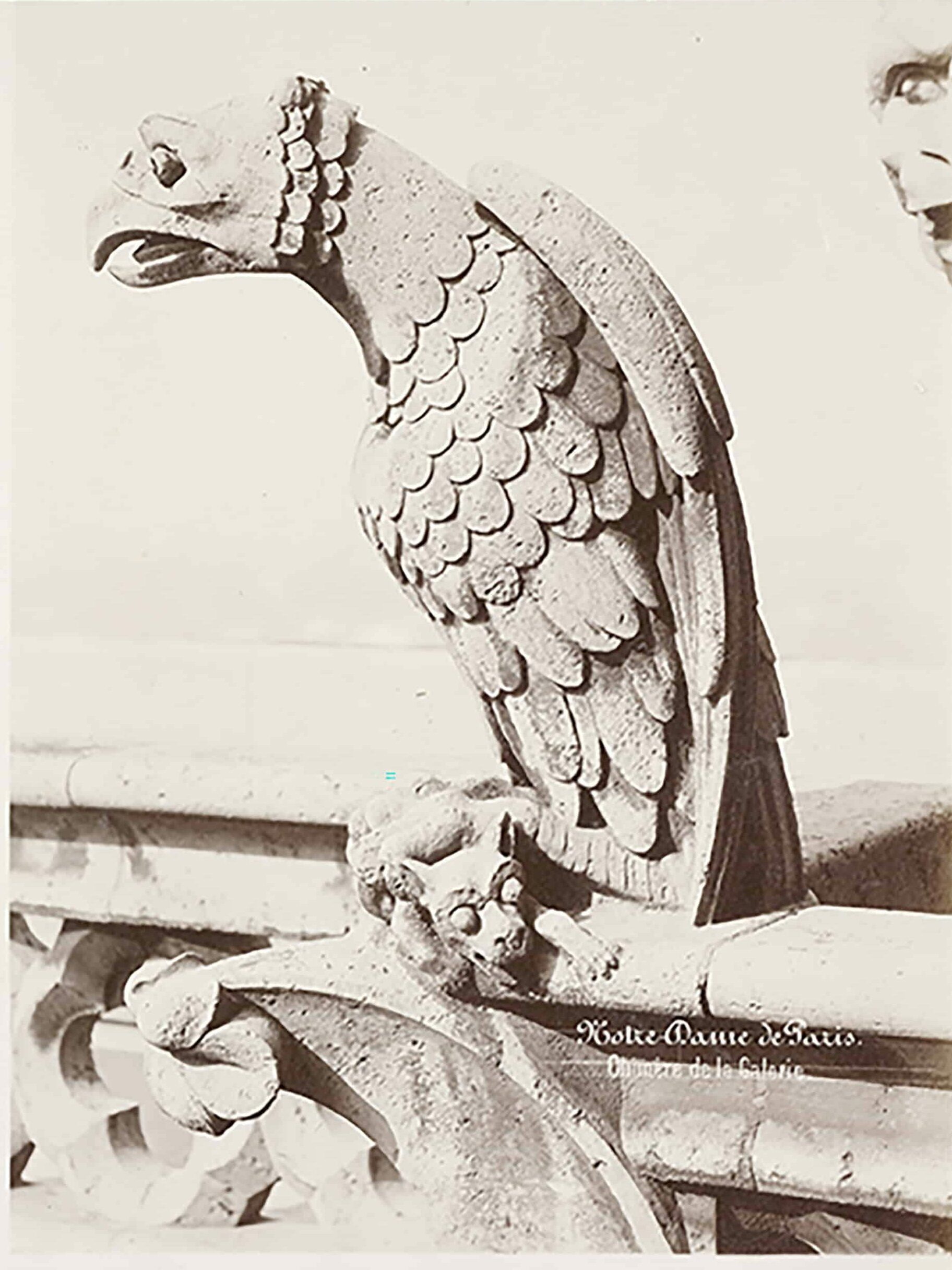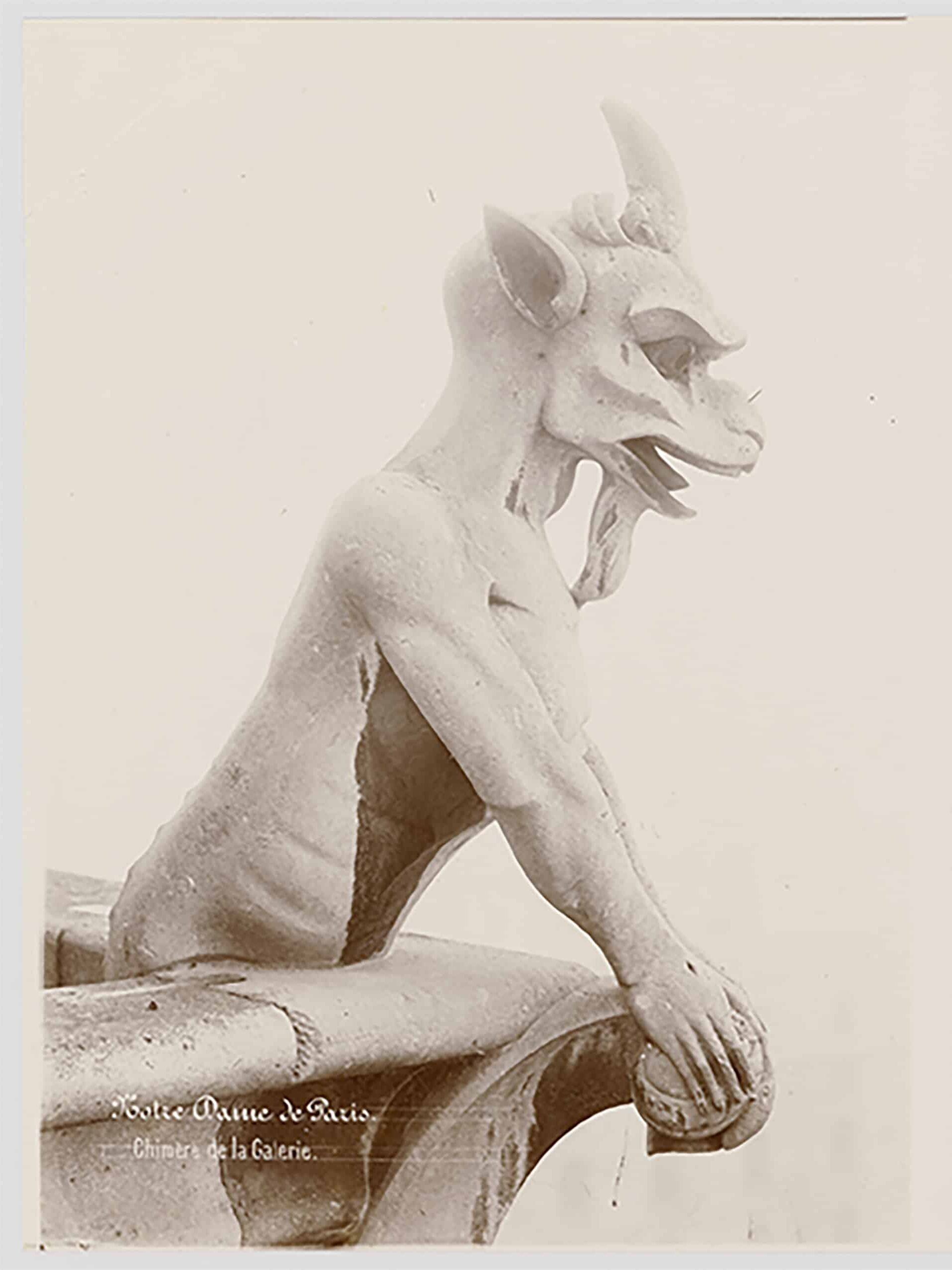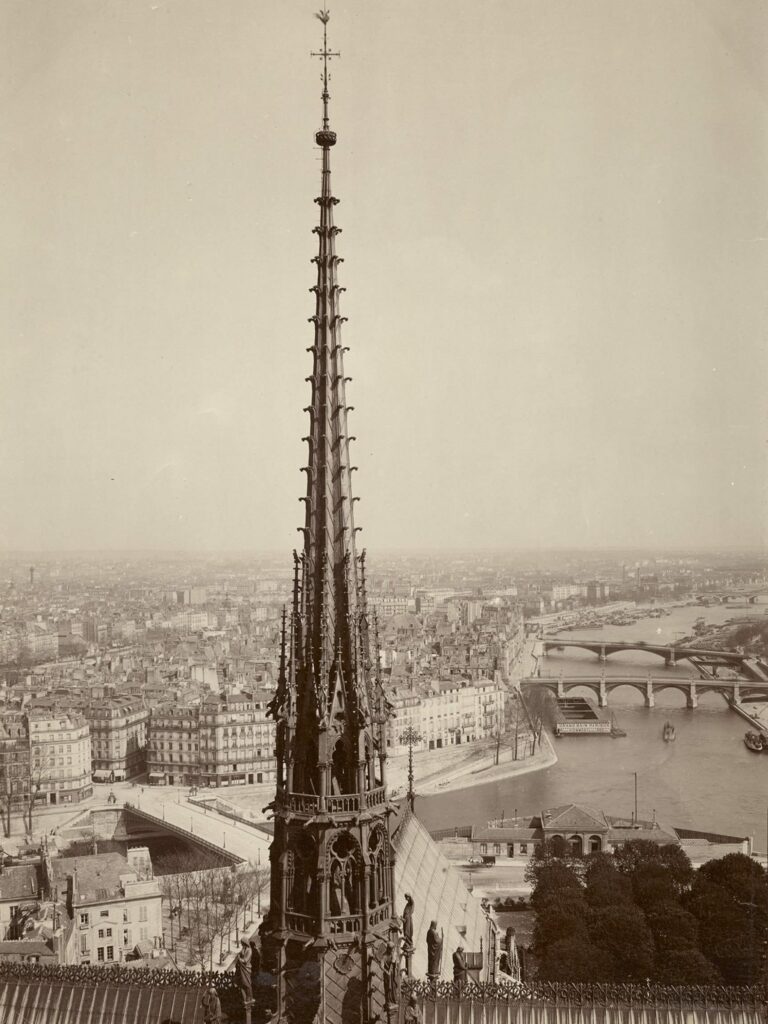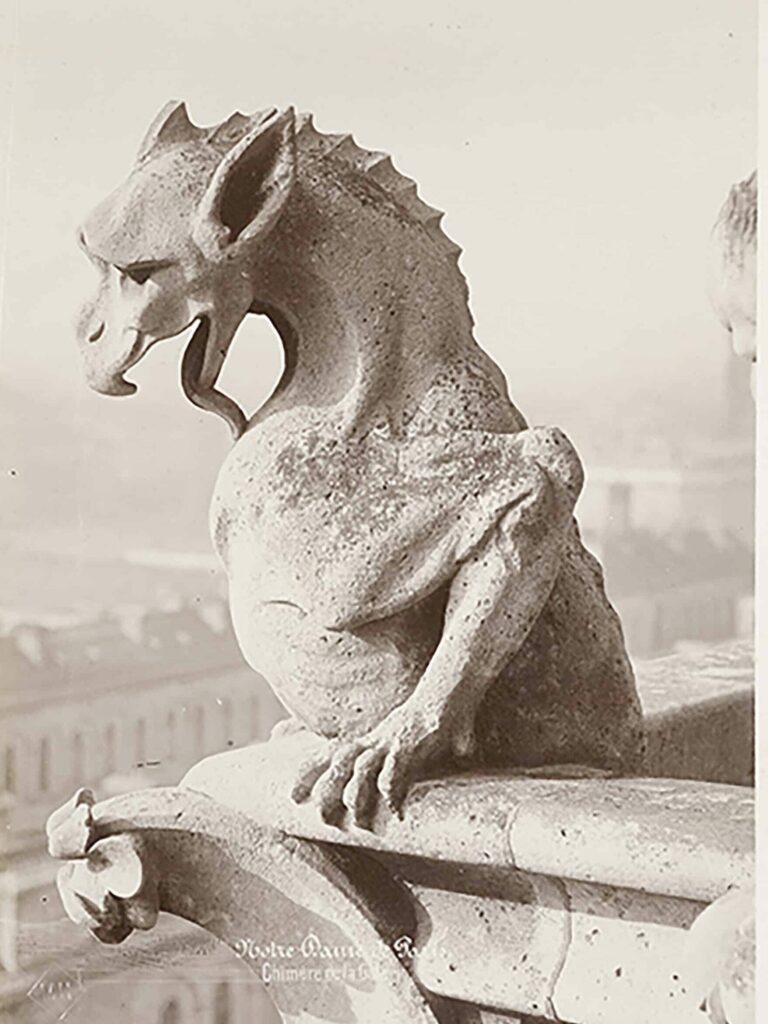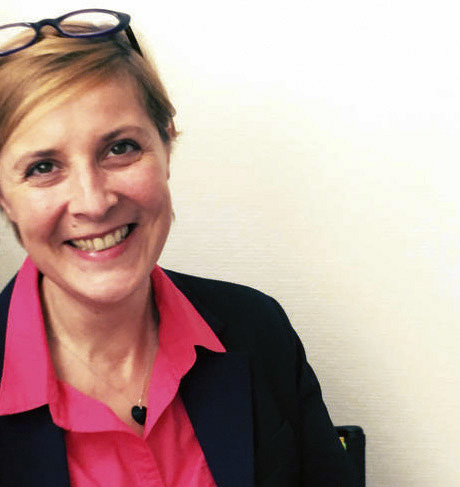“As Notre-Dame de Paris is readying to rise from the ashes, it was imperative for the MPP [Médiathèque du Patrimoine et de la photographie – Ed.] to showcase, at least in part, its extensive collection, preserved in stewardship for the Historical Monuments administration, the guardian of the cathedral for nearly two centuries,” explains Gilles Desiré dit Gosset, director of the MPP, in the introduction to the book. With seven thousand five hundred glass plate negatives and some ten thousand prints, this institution is home to the bulk of the work of Médéric Mieusement (1840–1905). This book is above all a brainchild of Dominique Gaessler, founder of Trans Photographic Press, one of the many French independent photo book publishers. Gaessler’s enterprise belongs to a group of 29 publishers associated under France PhotoBook and supported by the French Ministry of Culture. The association was founded with the aim of “promoting the publishing of photographic creation in France and abroad.”
Dominique Gaessler meticulously curates the design of his books to ensure each detail commands attention. Every aspect, from the format and paper to the typography and layout, is deliberated upon to serve the author’s vision and enhance the reader’s comprehension of the work. Notre-Dame, la cathédrale de Viollet-le-Duc par Médéric Mieusement showcases this dedication, standing out in his collection that predominantly features contemporary photographers. Trans Photographic Press’s notable releases also include A Kind of Color, which presents previously unseen color photographs by Magnum’s Guy Le Querrec, and, more recently, Cyrille Derouineau’s 23 rue de la Commune de Paris, a poignant exploration of his ancestral home.
A forgotten photographer
The volume dedicated to Notre-Dame resurrects the legacy of Médéric Mieusement, a once-obscure photographer who carved his niche in architectural photography, with a keen focus on religious monuments. Mieusement, who rendered his services through various state commissions, also distributed his work to private collectors and art publishers. Among his extensive repertoire, the Notre-Dame Cathedral emerges as a frequent subject, with nearly a hundred different perspectives in the collection. His works from the 1870s are of particular interest, as they capture the cathedral following its restoration by architects Lassus and Viollet-le-Duc, including the famed spire lost to the 2019 fire and now meticulously recreated for a 2024 unveiling—a testament to both the historical significance of his photographs and the aesthetic finesse that defines his oeuvre.
“For his shots, or at least some of them, Mieusement chose winter or early spring when the trees near the cathedral are devoid of foliage, making some parts of the building visible. The views were taken in the morning or evening, at a time when the aspect of the cathedral being photographed is free of shadow.”
Isabelle Gui
Isabelle Gui, overseeing the MPP’s vintage prints, offers insights into Mieusement’s photographic process: “For his shots, or at least some of them, Mieusement chose winter or early spring when the trees near the cathedral are devoid of foliage, making some parts of the building visible. The views were taken in the morning or evening, at a time when the aspect of the cathedral being photographed is free of shadow.” Gui further details how Mieusement pursued the ideal shot, placing his camera across the Seine for sweeping vistas or seeking permission to shoot from the windows of residential apartments to achieve the proper elevation. These meticulous efforts, as described in the book, reveal his commitment to capturing Notre-Dame from multiple perspectives, sometimes with a passerby included for scale, and at other times focusing closely on the fresh restorations by Lassus and Viollet-le-Duc.
A series of chimeras, uniquely captured in individual portraits, stand out in this collection both for the difficulty of access and their masterful rendering. They include the iconic “Le Stryge,” also referred to as “The Vampire,” a figure impossible to observe closely in reality due to its location. Alongside “Le Stryge” are other notable chimeras, such as the dragon with folded arms and the eagle clutching a lamb in its talons, each resonating with the mythological essence of these sculptural masterpieces. The foldouts in the book serve as a creative nod from the publisher, inviting readers to examine these figures one by one, thus enriching the documentary aspect of the work with a touch of vivid imagination.
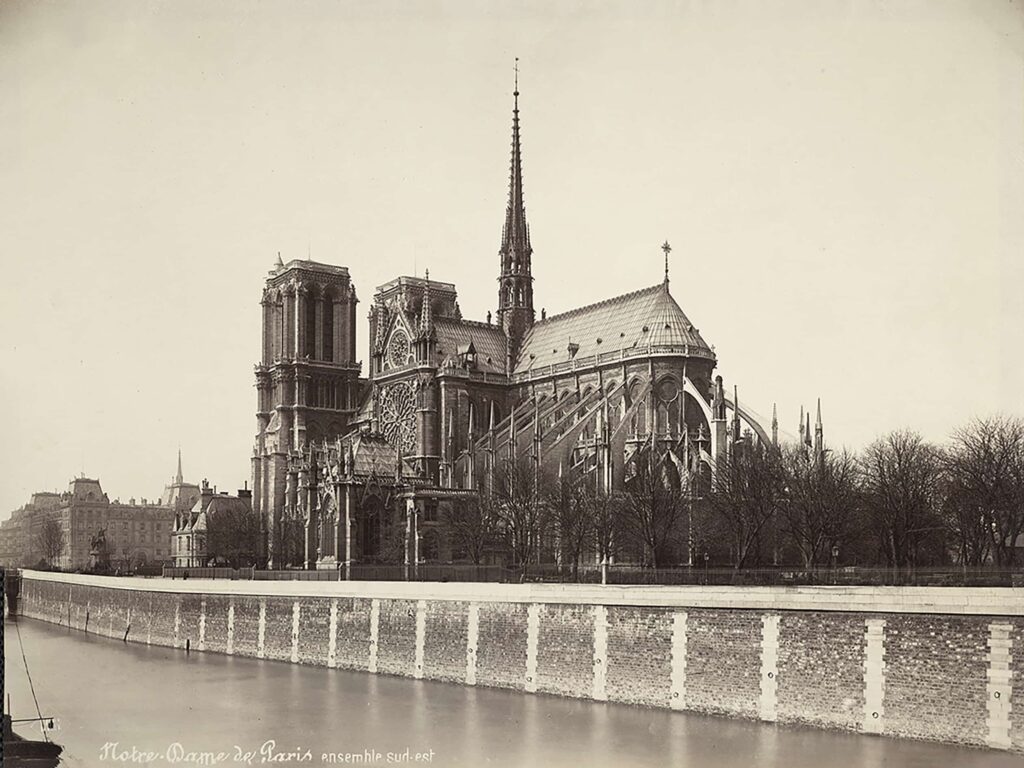
Notre-Dame: La cathédrale de Viollet-le-Duc par Médéric Mieusement, €68
Cyrille Derouineau, 23, rue de la Commune de Paris: Une maison de famille, €38
Guy Le Querrec, Kind of color, €38

